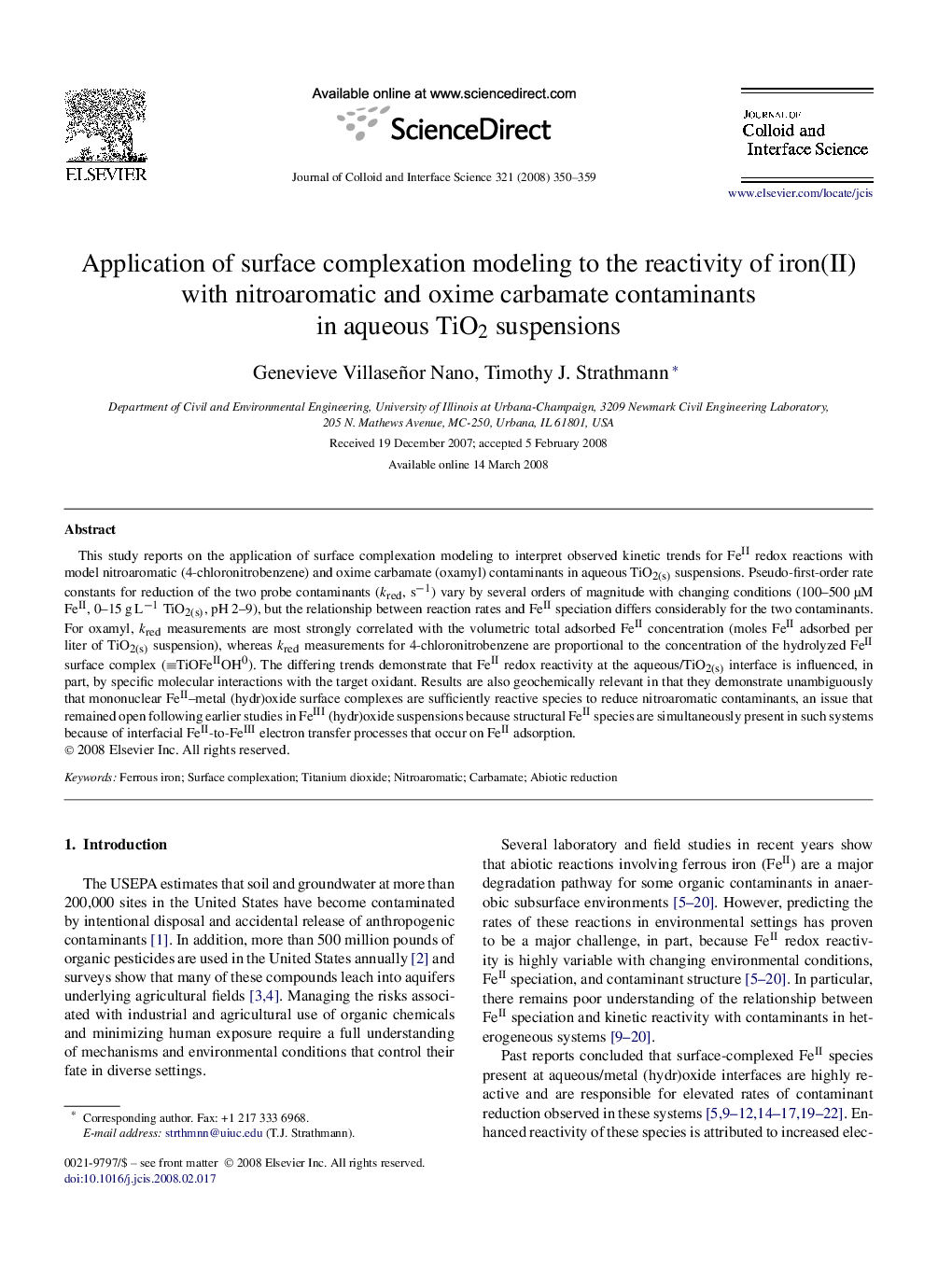| Article ID | Journal | Published Year | Pages | File Type |
|---|---|---|---|---|
| 611229 | Journal of Colloid and Interface Science | 2008 | 10 Pages |
This study reports on the application of surface complexation modeling to interpret observed kinetic trends for FeII redox reactions with model nitroaromatic (4-chloronitrobenzene) and oxime carbamate (oxamyl) contaminants in aqueous TiO2(s) suspensions. Pseudo-first-order rate constants for reduction of the two probe contaminants (kred, s−1) vary by several orders of magnitude with changing conditions (100–500 μM FeII, 0–15 g L−1 TiO2(s), pH 2–9), but the relationship between reaction rates and FeII speciation differs considerably for the two contaminants. For oxamyl, kred measurements are most strongly correlated with the volumetric total adsorbed FeII concentration (moles FeII adsorbed per liter of TiO2(s) suspension), whereas kred measurements for 4-chloronitrobenzene are proportional to the concentration of the hydrolyzed FeII surface complex (TiOFeIIOH0). The differing trends demonstrate that FeII redox reactivity at the aqueous/TiO2(s) interface is influenced, in part, by specific molecular interactions with the target oxidant. Results are also geochemically relevant in that they demonstrate unambiguously that mononuclear FeII–metal (hydr)oxide surface complexes are sufficiently reactive species to reduce nitroaromatic contaminants, an issue that remained open following earlier studies in FeIII (hydr)oxide suspensions because structural FeII species are simultaneously present in such systems because of interfacial FeII-to-FeIII electron transfer processes that occur on FeII adsorption.
Graphical abstractObserved rate constants for reduction of 4-chloronitrobenzene and oxamyl (kred) in iron(II)-amended aqueous TiO2(s) suspensions are correlated with iron(II) adsorption and speciation.Figure optionsDownload full-size imageDownload as PowerPoint slide
